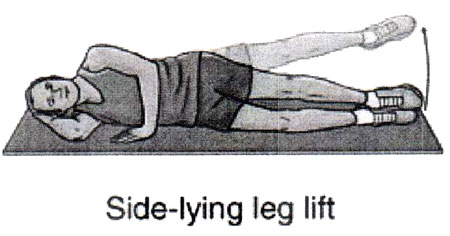
The changes in posture may be observed while the person is sitting, standing or walking.

They can develop because of repetitive motion, injury, pain, illness, muscle deconditioning or sedentary lifestyle.Ĭhanges in posture are often noted with an altered movement pattern in the body. Altered movement patterns do not occur randomly. The altered movement pattern is a sign of muscle imbalance in the body because of muscular dysfunction. As a result, a different sequence of muscular contractions occur called “an altered movement pattern”. The primary muscle responsible for the specific joint movement may become weak and inhibited, causing a synergistic muscle/muscles to become the primary muscle/muscles responsible for that joint movement. The physician must be able to recognize the muscular imbalance and the altered movement pattern in order to prescribe appropriate relaxation and strengthening exercises to restore the normal movement pattern in the body.Īn ” altered movement pattern” is a movement pattern in which a change occurs in the coordination of the muscle firing sequences for a specific group of muscles, facilitating a specific joint movement. The tendency for a specific muscle to become overactive and another muscle to become inhibited occurs over time creating a muscle imbalance and an altered movement pattern. An example of a phasic muscle is the gluteus maximus muscle, a hip extensor. On the other hand, phasic muscles have a tendency to become weak and inhibited. An example of a postural muscle is the psoas muscle, a hip flexor. Postural muscles have a tendency to become overactive, hypertonic, weak and shortened in length. Janda classified muscles into two groups “postural and phasic”. According to Vladimir Janda(1), muscle imbalances develop between muscles that have a tendency to develop tightness and other muscles which are prone to inhibition. Muscle strength can change due to different reasons, which include sitting or standing, repetitive motion, injury, lack of exercise and deconditioning causing a muscle imbalance in the body. These findings suggest that greater load could be a factor to increase the QL activity during the exercise in females with weakened GM.Muscles facilitate joint movement in the body and help maintain posture. Furthermore, the GM/QL ratios showed significant differences between no-load (1.78 ± 1.47) and external load-1 conditions (0.93 ± 0.60), and between no-load and external load-2 (0.85 ± 0.45) conditions (p< 0.05). Electromyographic (EMG) data of the quadratus lumborum (QL) and GM muscles were recorded during the exercise under three load conditions: no-load, external load-1 (3% of body weight), and external load-2 (5% of body weight).ĭuring the exercise, the EMG activities of the QL were significantly different under all three conditions (p< 0.05), with greater activity observed in the external load-2 condition (92.05 ± 65.93% maximal voluntary isometric contraction ) as compared to the others, and in the external load-1 condition (82.47 ± 57.36% MVIC) as compared to the no-load condition (48.94 ± 45.09% MVIC).

This study enrolled 24 females with weakness in the GM. This study aimed to demonstrate the effects of using external loads on the hip abductor muscles during side-lying hip abduction exercises in females with gluteus medius (GM) weakness.

Side-lying hip abduction exercise could be beneficial to improve the neuromuscular control of the hip abductor however, there has been limited information available to determine the exercise load during the exercise.


 0 kommentar(er)
0 kommentar(er)
